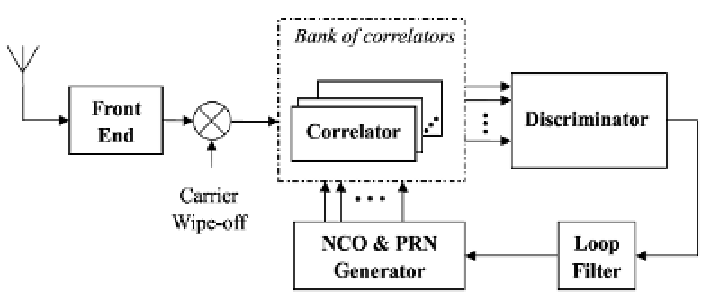Global Positioning System Reference
In-Depth Information
strongly influences the resulting multipath performance. Generally speaking, a narrower
correlator spacing leads to a reduced multipath error and a tracking jitter error, as long as
sufficient front-end bandwidth is ensured Dierendonck et al. (1992).
The code chipping rate determines the chip length (
T
c
), which ultimately decides the resulting
ranging error caused by the multipath. This means that a signal with a larger chip length
results in a smaller multipath error contribution. That is why, the modernized GPS L5 signal
can offer ten times smaller multipath error contribution than the legacy GPS L1 C/A signal,
as it has ten times higher chipping rate than that of L1.
The remaining multipath related parameters (i.e., amplitudes, delays, phases and number
of multipath signals) depend on the multipath environment, and have direct influence on
the tracking performance of the receiver. These parameters are generally used to define a
simulation model (for example, multipath fading channel model) in order to analyze the
performance of different multipath mitigation techniques.
3.1 Multi-correlator based delay tracking structure
A unified multi-correlator based delay tracking structure is developed to fit all the multipath
mitigation techniques in one common tracking structure. In a multi-correlator based delay
tracking structure, a bank of correlators is generated, unlike the conventional DLL-based
tracking structure, where only few correlators (i.e., in the range of three to seven complex
correlators depending on the type of techniques) are used. This large number of correlators
are required by the advanced multipath mitigation techniques in order to estimate the channel
properties and to take a decision on the correct LOS code delay. As shown in Fig. 5, after
Fig. 5. Block diagram for multi-correlator based DLL implementation.
the necessary front-end processing, and after the carrier has been wiped-off, the received
post-processed signal is passed through a bank of correlators. The NCO (Numerically
Controlled Oscillator) and PRN generator block produces a bank of early and late versions of
replica codes based on the delay of the LOS signal
τ
, the correlator spacing
Δ
, and the number
of correlators
M
.
In case of an EML tracking loop, the corresponding early-late spacing is
Δ
equal to 2
. The received signal is correlated with each replica in the correlator bank, and the
output of the correlator bank is a vector of samples in the correlation envelope. Therefore, we
obtain the correlation values for the range of
±
M
Δ
chips from the prompt correlator, where
is the correlator spacing between successive correlators.
The various code tracking techniques (named as Discriminator in Fig. 5) utilize the correlation
M
is the number of correlators and
Δ

Search WWH ::

Custom Search